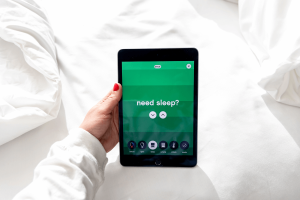
In 2005, Ann Johnson suffered a severe brainstem stroke at the age of 30. It left her paralyzed and unable to speak. She was diagnosed with locked-in syndrome, a rare neurological condition in which a person remains fully cognitively aware but loses all ability to move or communicate naturally. Ann relied on assistive devices to express herself for almost 18 years with great frustration and difficulty. Her life was changed in 2022 when she took part in a revolutionary clinical trial organized by the US San Francisco and UC Berkeley. Ann was able to hear her voice again after 2 decades, using a brain-computer interface (BCI) enhanced by artificial intelligence (AI).
A collaborative team of electrical engineers and neurosurgeons worked together to learn about the neural mechanics of speech in 2015. They identified the exact cortical regions that are responsible for speech production and developed a computer framework capable of analysing neural signals. This idea was simple but revolutionary. If scientists could bypass damaged neural pathways and directly interpret the instructions for speech to the brain, they could reestablish communication for people who had lost it.
This breakthrough resulted in the development of a neuroprosthesis, an implant that records brain activity and interprets it into synthesized speech. Ann became the 3rd participant for this study in 2022. This made her one of the first people in the world to restore her voice through this technology. After her stroke, Ann gradually recovered some physical abilities, such as making facial expressions and limited neck movements. She was dependent on an eye tracking system, which allowed her to pick letters one at a time, resulting in about 14 words per minute to communicate. This system was functioning but painfully slow as compared to normal conversation, which generally runs around 160 words per minute.
In 2022, Ann had a life-changing moment when she heard her voice generated in real time after 18 years of silence. The system records and transmits her neural activity to a computer by a surgically implanted electrode array placed over the brain’s speech centers. Advanced AI algorithms decode this information into text or synthesized audio. This system activates only when Ann actively tries to speak, which ensures user control and autonomy. This technology restored human connection and speech after 18 years of silence.
Ann has been transformed into a digital avatar to represent her during the conversations. This system had an 8-second lag between thought and speech output. But breakthroughs reported in Nature Neuroscience reduced this to just one second. The avatar could not only generate speech but also move its mouth and mirror facial expressions in synchronization with speech. Future versions may involve a photorealistic 3D avatar that provides even more naturalistic and immersive communication. Ongoing improvements to the AI model have supported the progress of this system.
In 2024, Ann lost her implant due to some medical reasons. Currently, she communicates using an eye-tracking device and maintains close contact with the research team. Ann is optimistic about neuroprosthetic technology despite losing her voice. She prefers wireless implants for improved comfort. She hopes to use her rediscovered communication abilities to support others in rehabilitation and to promote the technology as a tool for advocacy and empowerment.
Researchers believe that BCIs will eventually become accessible and standardized, offering restored speech to people with paralysis. This could considerably improve the quality of life, human dignity, and advance medical science.
Ann Johnson’s story highlights the transformative potential of AI-driven BCI, which was considered a science function but now represents a renewed voice, agency, and hope for those who are affected by severe paralysis. Though still under development, this technology holds enormous promise for the future.
Reference: Erne J. AI restores a woman’s voice 18 years after stroke stole her speech. Complete AI Training. Published on 18 August 2025. AI Restores a Woman’s Voice 18 Years After Stroke Stole Her Speech












